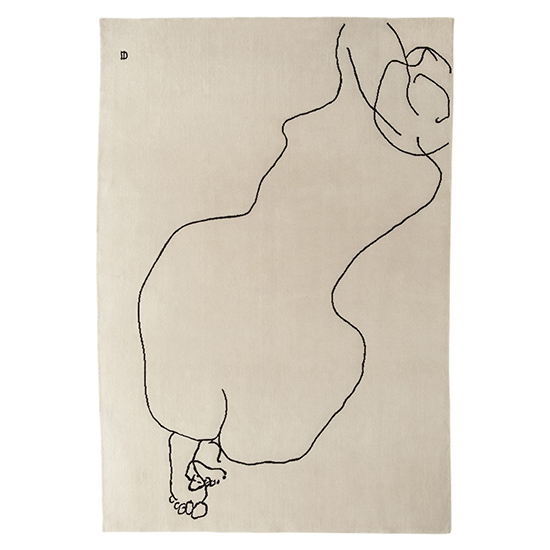
The artwork of Eduardo Chillida (1924-2002) represents one of the greatest artistic accomplishments of the late 20th century. To pay homage to the artist, the Chillida collection was created based on a chronological selection of his work: Figura Humana – 1948, Dibujo Tinta – 1957, and Collage – 1966, pieces that reflect the gestation process of his renown sculpture: Peine del Viento located in San Sebastián. The collection also includes two depictions of his famous hands: Mano and Manos from the ‘90s, and Gravitación from 1993 and 1994. Chillida’s artistic nuances have been faithfully translated into rugs, all handmade using various techniques and fibres, such as wool, silk, and hand-spun mohair, to create different textures, showcasing the essence of his work.
With pieces in more than 20 museums across the world, and countless exhibitions celebrating his work throughout the years, Chillida was a celebrated and prolific artist.
Born in San Sebastian, he began his life work in Paris, producing sculptures. Yet it would be a few years later, back in Spain, when he would discover the beauty of working with iron.
Public works were an important part of his artistic career, with more than 40 sculptures standing in different locations around the world. In 1972 he created “Lugar de Encuentros III”, today located on Madrid’s Paseo de la Castellana; the “Campo Espacio de Paz” in Lund, Sweden; and “Elogio de la Arquitectura II” in Palma de Mallorca. In 1973, his “Estela a Pablo Neruda” was erected in Tehran. It was in 1976 that the “Comb of the Wind XV” was installed in San Sebastian. Chillida would garner almost every award in existence for his work, and died in 2002 without seeing the completion of his great dream, the Tindaya Project, a public monument in the heart of the mountain